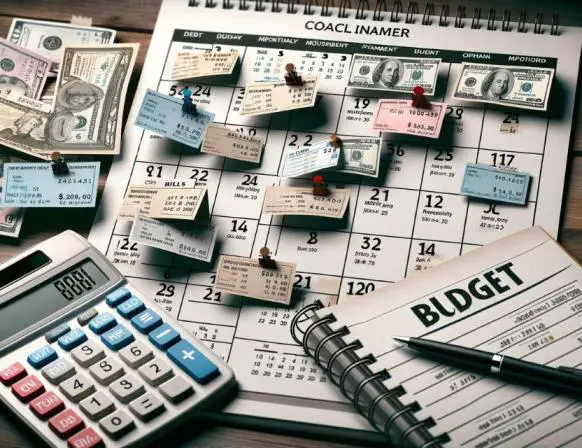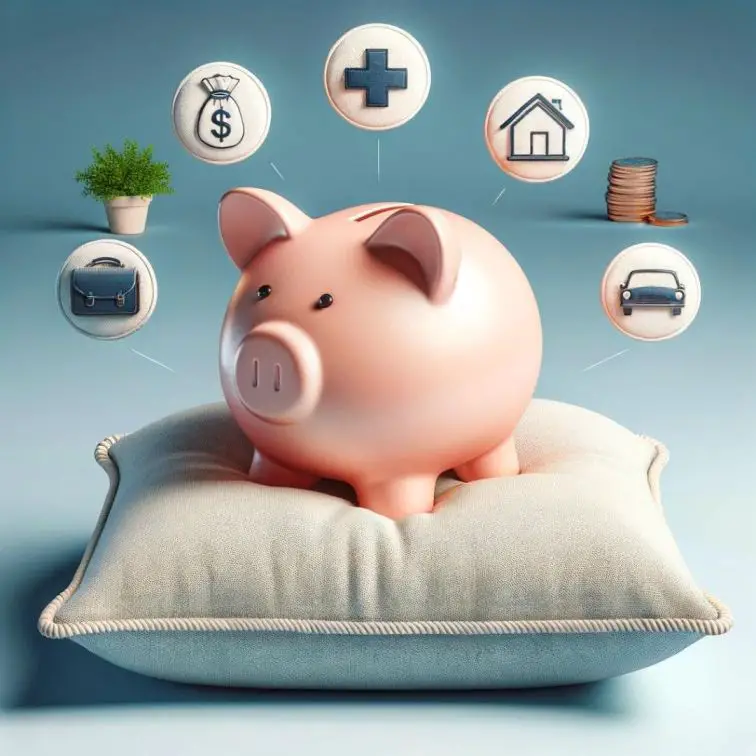In today’s fast-paced world, debt has become a prevalent issue for many individuals and households. From credit cards to mortgages, and student loans to personal loans, the burden of debt can weigh heavily, affecting not just financial stability but also mental health and family dynamics. Understanding and selecting the right debt solutions is crucial for regaining control of your financial life and stepping onto the path toward financial freedom. This article explores various effective solutions for financial freedom, offering insights into strategies and solutions for managing and overcoming debt.
Understanding Your Debt
| Aspect | Details |
|---|---|
| Types of Debt | Credit Card, Mortgage, Student Loans, Personal Loans |
| Impact of Debt | Monthly Payments, Interest Rates, Repayment Terms, Psychological Impact |
| Strategies for Understanding | Create a Debt Inventory, Use Debt Calculators, Check Your Credit Report |
Before you can effectively navigate your way out of debt, it’s crucial to have a comprehensive understanding of what you owe. This understanding is not just about knowing the total amount but involves a deeper analysis of the types of debt you have, their terms, and their impact on your overall financial health. Here’s a detailed exploration of the key components of understanding your debt:
Identifying Types of Debt
1. Credit Card Debt: Often seen as the most volatile form of debt due to its high interest rates and revolving nature, credit card debt can quickly spiral out of control if not managed properly. It’s essential to know not just your total credit card debt but also the interest rates on each card and any potential fees (e.g., late payment fees, annual fees).
2. Mortgage: As a long-term loan secured against your home, a mortgage generally has a lower interest rate compared to unsecured debt like credit cards. Understanding your mortgage involves knowing your principal balance, interest rate, term, and whether you have a fixed or adjustable rate.
3. Student Loans: These can be federal or private, and each type comes with its own set of rules regarding repayment, deferment, and forgiveness programs. Knowing the type of student loans you have, their interest rates, and repayment options is vital.
4. Personal Loans: Used for a variety of purposes, personal loans can be secured or unsecured. Understanding this type of debt means knowing the loan amount, interest rate, repayment term, and any fees associated with early repayment or late payments.
Assessing the Impact of Debt
Understanding your debt also means assessing its impact on your financial well-being and lifestyle:

- Monthly Payments: Calculate the total monthly payments across all debts. This figure is crucial for budgeting and understanding how much of your income is tied up in debt repayment.
- Interest Rates: High-interest rates, especially on credit card debt, can significantly increase the total amount you pay over time. Assessing which debts have the highest rates can help prioritize which debts to pay off first.
- Repayment Terms: Long-term debts like mortgages come with a set repayment period. Knowing the term helps in planning long-term financial goals. For variable-rate loans, understanding how rate changes could affect your payments is also important.
- Psychological Impact: Debt can lead to stress and anxiety, affecting your quality of life. Recognizing this can motivate you to address your debt more aggressively.
Strategies for Understanding Your Debt
- Create a Debt Inventory: List all your debts, including creditor name, total amount owed, interest rate, and monthly payment. This inventory will give you a clear picture of your financial obligations.
- Use Debt Calculators: Online tools can help you understand how long it will take to pay off your debt with current payments, how much interest you will pay, and how increasing your payments can affect your debt over time.
- Check Your Credit Report: Your credit report can provide a comprehensive view of your debt and how it’s reported to credit bureaus. It’s also a good opportunity to check for inaccuracies or fraudulent accounts.
By thoroughly understanding your debt, you’re better equipped to make informed decisions about how to manage and eventually eliminate it. This deep dive into your financial obligations is the first, and perhaps most critical, step toward achieving financial freedom and a healthier financial future.
Debt Solutions Overview
Debt Consolidation
Debt consolidation involves combining multiple debts into a single loan with a lower interest rate. This can simplify your payments and potentially save you money on interest. Options for consolidation include personal loans and balance transfer credit cards. While consolidation can make debt more manageable, it’s important to understand the terms and ensure that the new interest rate is genuinely lower.
Debt Management Plans (DMPs)
A DMP is a structured repayment plan managed by a credit counseling agency. It can lower interest rates and consolidate payments into one monthly sum. While DMPs can provide relief and structure, they may also require closing credit accounts, which can impact credit scores temporarily.
Debt Settlement
This approach involves negotiating with creditors to settle a debt for less than the amount owed. While it can reduce your debt load, it carries significant risks, including damaging your credit score and potential tax implications on forgiven debt.
Bankruptcy
As a last resort, bankruptcy can offer a way out of insurmountable debt. Chapter 7 bankruptcy liquidates assets to pay off debts, while Chapter 13 reorganizes debt into a repayment plan. Bankruptcy has long-term impacts on your credit history and ability to obtain future credit, making it a solution to consider carefully.
DIY Debt Repayment Strategies
| Strategy | Concept | Benefits | Drawbacks |
|---|---|---|---|
| Snowball Method | Paying off debts from smallest to largest balance. | Provides quick wins for motivation. | May pay more in interest over time compared to the Avalanche method. |
| Avalanche Method | Paying off debts with the highest interest rates first. | Saves money on interest over time. | Can be less motivating without the quick wins of the Snowball method. |
| Budgeting Tips | Creating and sticking to a budget that prioritizes debt repayment. | Helps manage finances and accelerates debt repayment. | Requires discipline and may need lifestyle adjustments. |
| Negotiating with Creditors | Communicating with creditors to adjust payment plans or reduce interest rates. | May lead to more favorable payment terms and save money. | Negotiations may not always be successful; potential impact on credit score. |
Tackling debt on your own requires a strategic approach and a strong commitment to your financial goals. While the prospect can seem daunting, several effective DIY debt repayment strategies can empower you to regain control over your finances. Below, we delve into the most popular methods and provide tips for creating a budget that supports your debt repayment efforts.
Snowball vs. Avalanche Methods
The Snowball Method:
- Concept: You start by paying off your debts from the smallest balance to the largest, regardless of interest rates. Once the smallest debt is paid off, you roll the amount you were paying on that debt into the next smallest debt, creating a “snowball” effect as you eliminate each debt.
- Benefits: This method provides quick wins, which can be incredibly motivating. Seeing debts disappear one by one helps maintain momentum and encourages you to keep going.
- Drawbacks: Since the focus is not on interest rates, you may end up paying more in interest over time compared to other methods.
The Avalanche Method:
- Concept: This method prioritizes debts with the highest interest rates first, regardless of the balance. By paying off the most expensive debts first, you save money on interest charges over time.
- Benefits: It’s cost-effective in the long run because you reduce the amount of interest paid.
- Drawbacks: It might take longer to pay off your first debt, which can be less motivating for some people if they don’t see immediate results.
Creating a Budget That Supports Debt Repayment
Step 1: Assess Your Income and Expenses

- Begin by calculating your total monthly income after taxes.
- List all monthly expenses, categorizing them as fixed (rent, mortgage, car payments) and variable (groceries, entertainment).
- Identify areas where you can cut back on spending to free up more money for debt repayment.
Step 2: Prioritize Your Expenses
- Ensure basic needs (food, shelter, utilities) are covered first.
- Evaluate which variable expenses can be reduced or eliminated. For example, dining out less often or canceling unused subscription services.
Step 3: Allocate Extra Funds to Debt Repayment
- Use the extra money from reduced expenses to increase your debt payments, following either the snowball or avalanche method.
- Consider allocating unexpected income (tax refunds, bonuses) to debt repayment as well.
Step 4: Monitor and Adjust Your Budget Regularly
- Regularly review your budget and spending habits. Adjustments may be necessary as your financial situation changes or as you pay off debts.
- Celebrate milestones to stay motivated. Paying off a debt is a significant achievement and should be recognized.
Tips for Negotiating with Creditors on Your Own
- Communication: Reach out to your creditors to discuss your situation. Many are willing to work with you to adjust your payment plan.
- Interest Rate Reduction: Ask if there’s a possibility to reduce your interest rates. Even a small reduction can make a big difference over time.
- Waiving Fees: If you’ve been a good customer, creditors might be willing to waive late fees or over-limit fees to help you catch up.
- Payment Plans: Inquire about setting up a new payment plan that aligns better with your current financial situation.
By taking a hands-on approach to debt repayment, you can devise a plan that’s tailored to your unique financial situation. Whether you choose the snowball method for its motivational benefits or the avalanche method for its cost efficiency, the key is consistency and dedication to your plan. Coupled with a solid budget that prioritizes debt repayment, these DIY strategies can be powerful tools in achieving debt freedom and financial stability.
Choosing the Right Debt Solution
Finding the most effective way to manage and pay off debt is a crucial step towards financial freedom. However, with several debt solutions available, selecting the right one can feel overwhelming. This detailed guide aims to simplify the process, helping you make an informed decision that aligns with your financial goals and situation.
Assess Your Financial Situation
| Aspect | Tools/Indicators | Description |
|---|---|---|
| Income Streams | Laptop with charts and graphs | Displays various income sources in vibrant charts. |
| Debt Levels | Organized binder with colorful tabs | Contains detailed records of debts with progress markers. |
| Savings Rates | Digital tablet showing pie chart | Illustrates savings contributions in lively, colored sections. |
| Monthly Expenses | Printed bank statements and bills | Spread out for review alongside budget calculations. |
| Financial Goals | Bulletin board with colorful post-it notes | Mark key tasks and deadlines in a rainbow of colors. |
1. Total Debt Amount: The total sum of your debts influences the best approach. Smaller amounts might be manageable through budget adjustments or consolidation loans, while substantial debt might require more structured solutions like debt management plans or bankruptcy.
2. Types of Debt: Not all debts are created equal. Secured debts (e.g., mortgages, auto loans) have different implications than unsecured debts (e.g., credit cards, personal loans). Some solutions are better suited for specific types of debt.
3. Income Stability: Your current and future income stability plays a crucial role. Solutions that require consistent monthly payments over a long period may not be suitable for those with fluctuating incomes.
4. Credit Score Impact: Different debt solutions have varying impacts on your credit score. Understanding these implications is essential, especially if you plan to apply for major loans in the future.
Evaluate Debt Solution Options
1. Debt Consolidation: Ideal for those with multiple debts looking to simplify payments and potentially reduce interest rates. Requires a good credit score for the best terms.
2. Debt Management Plan (DMP): Suitable for those struggling to manage unsecured debt payments. It offers structured payment plans and interest rate reductions but usually involves closing credit accounts, which can impact credit scores.
3. Debt Settlement: An option for those facing financial hardship, unable to meet minimum payments. It can significantly lower the debt amount but negatively affects credit scores and might have tax implications.
4. Bankruptcy: The last resort for individuals overwhelmed by debt with no feasible way to repay. It offers a fresh start but has long-lasting negative impacts on creditworthiness and may involve asset liquidation.
Considerations for Choosing the Right Solution

1. Long-Term Financial Goals: Reflect on how each debt solution aligns with your future financial plans. For example, if you’re planning to buy a home, preserving your credit score might be a priority.
2. Personal Discipline and Financial Literacy: Some solutions, like DMPs, provide structured support, which can be beneficial for those needing guidance. Others, like debt consolidation, require discipline to avoid accumulating new debt.
3. Potential Costs: Assess any fees associated with the debt solution, including interest rates, service fees, or penalties for early debt payoff. These costs can vary significantly and impact the overall effectiveness of the solution.
4. Emotional and Psychological Considerations: The stress of dealing with debt can be overwhelming. Consider solutions that not only make financial sense but also provide peace of mind. Sometimes, a solution with a more immediate impact on reducing stress is worth more than the purely financial aspects.
Seeking Professional Advice
Before making a decision, it might be beneficial to consult with a financial advisor or credit counselor. These professionals can offer personalized advice based on your unique financial situation, helping you navigate the complexities of debt solutions. They can also provide insights into aspects you may not have considered, ensuring that your chosen path is the most effective and sustainable one for you.
Preventing Future Debt
Achieving a debt-free status is a significant milestone, but maintaining financial health and preventing future debt is an ongoing process. Implementing proactive strategies can help safeguard against falling back into debt and ensure long-term financial stability. Below are detailed approaches to prevent accruing new debt and strengthen your financial foundation.
Building an Emergency Fund
Purpose and Importance:

- An emergency fund acts as a financial buffer that saves you from resorting to credit cards or loans during unexpected expenses, such as medical emergencies or sudden job loss.
- Ideally, aim to save three to six months’ worth of living expenses. This provides ample cushioning to navigate through most financial emergencies without acquiring new debt.
Strategies for Building:
- Start Small: Even a modest savings goal can make a difference. Begin with a target of $500 to $1,000 and gradually increase it.
- Automate Savings: Set up automatic transfers to your savings account each payday to ensure consistent contributions without having to think about it.
- Cut Back on Non-Essential Expenses: Review your spending habits and identify areas where you can reduce expenses, funneling the savings into your emergency fund.
Using Credit Wisely
Understanding Credit:
- Credit can be a valuable financial tool if used responsibly. It can help build your credit score, earn rewards, and provide purchase protection.
- The key is to use credit for planned purchases and not for extending your monthly budget.
Best Practices:
- Pay Balances in Full: Avoid interest charges and debt accumulation by paying off your credit card balances in full each month.
- Use Credit for Needs, Not Wants: Limit credit card use to necessary expenses to prevent impulsive buying and overspending.
- Monitor Credit Usage: Keep track of your credit card usage to ensure it aligns with your budget. Consider setting alerts for when you approach your spending limit.
Investing in Financial Education
Benefits:
- Financial education empowers you to make informed decisions about saving, investing, and using credit. It enhances your ability to budget, plan for the future, and navigate financial challenges.
- Knowledge about financial products, interest rates, and investment options enables you to optimize your finances and avoid pitfalls that lead to debt.
Ways to Enhance Financial Literacy:
- Read Books and Articles: There’s a wealth of information available on personal finance management. Start with topics that are most relevant to your current financial goals.
- Attend Workshops and Seminars: Many community centers, libraries, and financial institutions offer free or low-cost workshops on budgeting, investing, and debt management.
- Use Online Resources: Utilize online courses, podcasts, and blogs focused on personal finance. Many of these resources are free and can be accessed at your convenience.
Creating and Sticking to a Budget
The Role of Budgeting:
- A budget is a roadmap for your finances. It ensures that you live within your means, have enough to cover your expenses, and can save for the future.
- Regularly updating your budget allows you to adapt to financial changes and avoid overspending.
Budgeting Tips:
- Track Your Spending: Keep a record of all your expenses for at least a month. This will give you a clear picture of where your money is going.
- Set Realistic Goals: Your budget should reflect your financial priorities and goals, whether it’s saving for retirement, a vacation, or paying off debt.
- Review and Adjust Regularly: As your financial situation changes, so should your budget. Regular reviews help you stay on track and make adjustments as needed.
Conclusion
Debt can be overwhelming, but with the right approach, it’s possible to navigate your way out of it. By understanding your debt, exploring various solutions, and implementing a strategy that works for you, financial freedom is within reach. Remember, taking the first step towards addressing your debt is the most crucial part of the journey.

